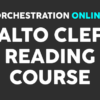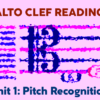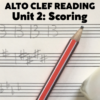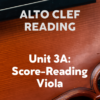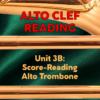The view outside my window has shifted from a condo parking lot to a stand of redwoods. I’ve changed locations 5 times over the last seven days as my business trip has shifted over to some more personal vacation time. From this point on, this Diary is going to go on hold, to be replaced with sporadic Harp Concerto excerpts and commentary.
First, thanks to my readers, YouTube followers, and Orchestration Online Facebook group. I truly appreciate all the encouraging words as I documented my travels. In truth, this concert premiere was more about small beginnings than huge fulfillments. Though it was tremendously gratifying to go through the whole experience, from commission to concert, I’m sure there are many other stories just like mine at any given time across the world, and with much higher stakes involved.
But before I sign off as a diarist, a few words about the premiere, and what’s happened since.
One of the last bits of information I heard before leaving the Thursday night rehearsal was that the reception before the concert was going to be held, not for the New Zealand consul general, but in honor of me and the soloist. I visibly gulped. Then I looked down at my battered black cross-trainers and realized that I wouldn’t be able to hide in a corner, dressed casually.
So the following afternoon was spent shoe-shopping, for that basic bit of composer attire: Beatle boots. I found a good pair in as short a time as possible, and tanked up at a decent Mexican restaurant. Filled to the gills with carne asada, I showed up to the reception dressed to the nines and ready for anything.
The reception went great – though I wish that more symphony members had attended. They’d been warned off by the conductor the night before, who’d said that he’d tolerate a very small amount of wine-sipping and hors d’oeuvre-nibbling – and they actually stayed away for the most part. That was probably the biggest difference I’d seen between this orchestra and a professional group: that the buffet table wasn’t crowded with musicians no matter what dire warnings may have been leveled. Nevertheless, a good sprinkling of family and friends were in attendance, and helped with all necessary imbibing of the fine New Zealand wines, of which a couple of cases were there for the drinking.
I met Leon, the NZ consular general. Very nice guy, in it for the fun of it, yet a demon researcher and tireless promoter of all things Kiwi. Even though my retired composer bio had been mistakenly used in the program notes, Leon had looked up all my bios, and wanted to know all about my drinking game for brass trio, the Variations on John Barleycorn Must Die. I think that impressed him even more than the concerto that followed, actually. He gave a speech at the start of the concert – apparently, I’m “the best sort of American. The kind who moves to New Zealand!” Awesome creds, sweet as, Leon!
As to the concert itself: things went pretty much as expected. The orchestra played their level best, which was quite amazing in places. My soloist Christina fluttered and glittered through her part, and dropped everyone’s jaw with her expressiveness and virtuosity. And the conductor kept everyone in line with skill and sensitivity.
The biggest challenges that the orchestra faced were counting rests and certain intonation problems. There were several passages where entrances came in a beat late, or even a section late. Also, some sections didn’t quite come off due to misread notes, or inaccuracy of pitch in the strings or horns. For this ultimate lack of cohesion, the person bearing the most responsibility is me. I could have written something much more obvious and straightforward, for all players including the soloist. Instead, I allowed my imagination to stretch out to a greater extent; a professional extent, to be more precise. The orchestra did their absolute best with it, and for that I honor them and appreciate their contribution.
What this means in the end, though, is that the recording of the concert is not consistently useful as a demonstration of the harp concerto – at least, not as something which would be constructive to score-read all the way through. However, there are some good bits; very good bits, in fact. Some of the places where I felt I’d scored a particularly intriguing texture did come off very nicely. I can’t wait to share some of these with my YouTube viewers and Facebook group members.
I was especially relieved that the intro sounded very smooth. That’s a section with very wispy textures, that sets the mood for the whole movement, if not the concerto itself. It’s indicative of the whole direction I seem to be going in my original works: huge focus on textural subtleties, and the potential for coloration locked within certain modalities. It’s probably the finely tuned balance on each page that an amateur/semipro ensemble might find the most tricky, especially considering how dynamic proportions sometimes force players to listen in a way that they’re not used to. This, in turn, can affect intonation if individual players use certain fallbacks upon which to center their pitches (like: basic parameters of classical tonal schemes, following the melody instrument, listening to the tuning of rhythmic harmony, etc.). Many pages of my concerto turned these simple strategies on their well-worn heads.
All the same, any shortcomings from the viewpoint of the orchestrational perfectionist were completely lost on the audience, who returned a very positive, enthusiastic response after the last note. And I was very happy to take a bow in front of that orchestra – especially in light of the sincerity of the orchestra’s playing and the extraordinary effort of my soloist Christina. At the interval, I was quite pleased to meet a few of my YouTube viewers in person. Thanks much, guys, I really appreciate your attendance and feedback.
A quick night of sleep, and a mad drive up Interstate-5 followed the next day. While I was moving through square miles of orchards and acres of rancid-smelling feedlots, my sixth Baby Pops was being performed back home by Orchestra Wellington. From what I was told later, this was one of the best crowds yet. The orchestra was once again surprised at the last minute that the scores were a bit harder than they expected, but then really happy to get something that really roared like a fine-tuned engine. My hugely expanded re-orchestration of Teddy Bear’s Picnic did particularly well, with the trumpet players oozing out those juicy riffs all the way through. There’s something deep inside the heart of every song, whether it’s progressive and arcane, or just a simple child’s song. Getting into that place and making it really sing is part of the job that keeps it fresh for me, year after year. May there be many more!
The only fly in the ointment was a somewhat condescending, 1000-word e-mail received by a member of the orchestra that performed the harp concerto, waiting in my inbox at the end of my journey. It was a point-by-point dissection of the part I’d written them, complaining about various aspects of the notation and technique that I’d asked for. While I’m not above criticism and neither is anyone else, these points were pretty much an absurd attempt to deflect criticism should I express disappointment with their individual performance. I wouldn’t even bother mentioning it, except to mention that my definition of professionalism precludes the kind of response that some of my readers might well feel this musician deserves. Sure, she was wrong on nearly every point. And yes, this was the most obnoxious timing imaginable, going against the whole feeling of inclusion and brotherhood I’d felt with this orchestra. Yet I simply cannot get pulled into personal quibbles with people. There isn’t enough time in the world. All one should really say is something like what I wrote back:
“I always appreciate comment from my musicians. Thanks for taking the time to write them down and sharing your perspective. I’ll look into the concerns you raised with interest.”
I recommend making a copy of these words and putting them somewhere on your desktop where they can be quickly copied and pasted in place of a verbal blasting, however richly deserved.
All of that silliness aside, I’ve hardly had a chance to think about the concerto since its performance. All I can focus on at the present moment is getting as much personal enjoyment out of the remainder of my vacation before returning to Wellington and jumping back into my massive, never-ending orchestration series. I can’t wait for that to be completed, but it’s going to take a year at the rate I’ve been going. Don’t worry, the strings, winds, and brass will all be released over the next few months.
So anyway, stay tuned. As time permits, I will post sections of the harp concerto, with score samples and analysis. And hopefully, I’ll have more time to answer questions about the efforts of my fellow orchestrators out there. Keep the faith, stay focused, and get back to work.

